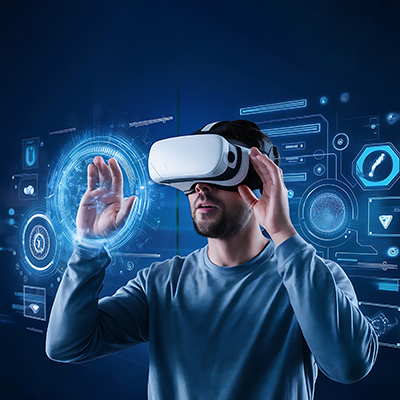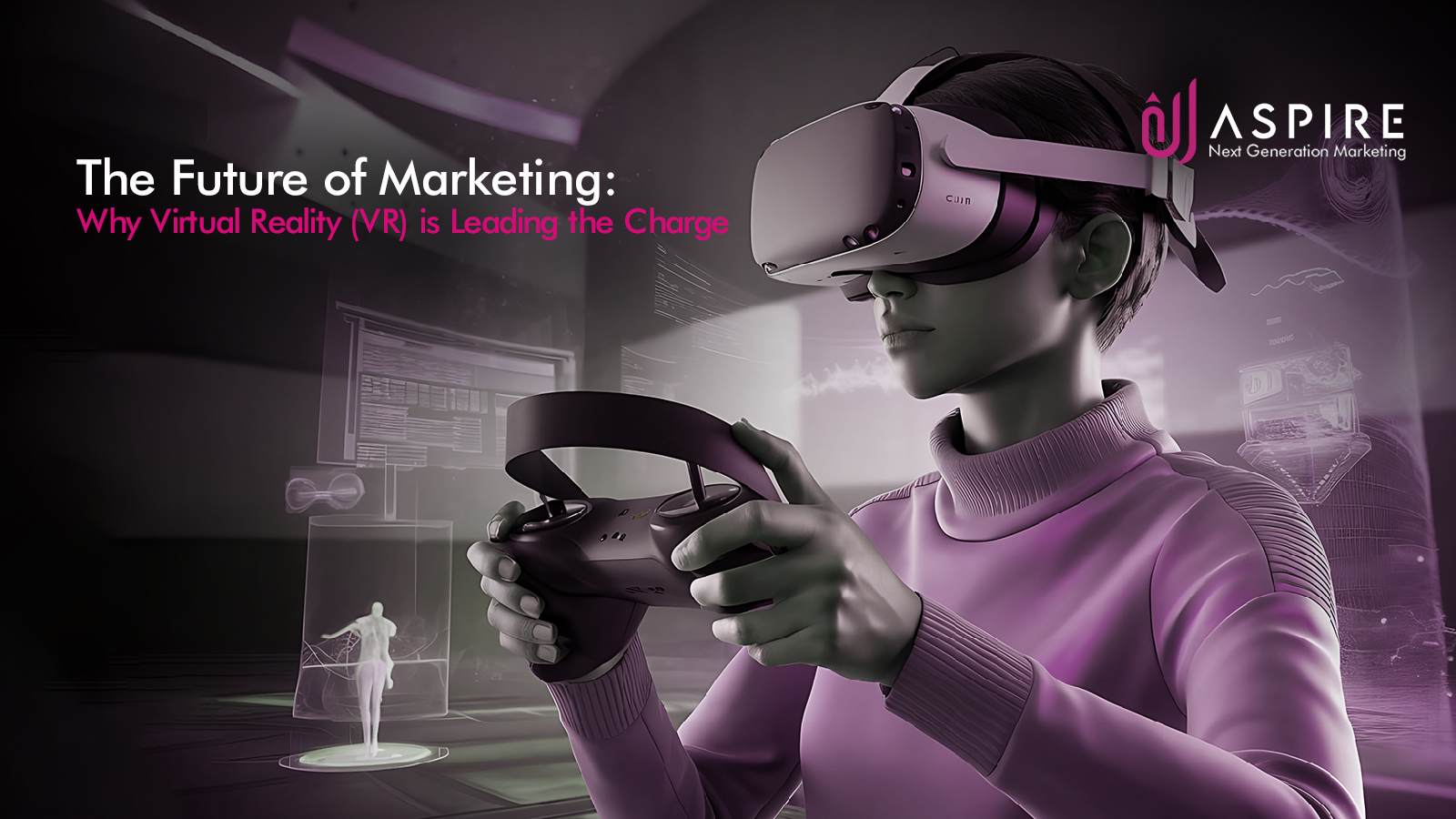Virtual Reality (VR), is another new entrant in the global market to rival voice as well, a giant on its own against the massive growth of various industries. Marketing Part 1: Virtual Reality and its role in disrupting consumer engagement. Virtual Reality (VR) is the simplest solution to acquire a large number of customers and somewhat increase sales.
Table of Contents
The Rise Of Virtual Reality in Digital Marketing
Virtual Reality (VR) has gone from a tool of fun and games to one with various applications in recent years. It can be tempting to view this immersive tech scenario as something of a red herring for consumer engagement, brand storytelling, and interactive experiences. Virtual Reality in Marketing: A Closer Look At How It Could Change The Future Of Industry.

Evolving Marketing Strategies
Learn how VR is allowing brands to create content on a whole new level of interactivity unachievable by static media. VR: This enables one to enter a brand’s environment and interact with it in front, giving a real feel of the same. On the other side, real estate companies are using VR to allow buyers to visit properties in any part of the world.
Virtual Reality Is Increasing Consumer Engagement
Find out more here about how VR’s interactive abilities are transforming advertising and enabling consumers to engage with content on a greater level. Typical advertising involves content that the viewer then passively consumes, as in an ad viewers just watch without directly interacting.
Global Reach And Accessibility
The ability of virtual reality to break the restrictions in national and regional boundaries is also one good characteristic of VR. This is especially important for businesses that are launching new products or services in international markets. It enables consumers to experience virtual events, product launches, and interactive campaigns online on their devices from anywhere in the world, making a brand global and creating opportunities for participation worldwide.
Future Trends on Virtual Reality in Marketing
In Payes’ mind, the future of VR in marketing is so very bright. Rapid Evolution of the VR Technologies: Additional Innovations and New Applications As VR technology brands look ahead at emerging trends and future advances in the tech, they can get on board with those changes early, setting them up to be trendsetters capable of creating truly engaging campaigns that capture an audience’s attention.
Benefits of Immersive Experiences
At a time when technology is constantly changing the way we interact with each other, immersive experiences offer something new. These are fundamental changes in behavior between how and when we synch information/entertainment with each other.
Improve Engagement & Retention
The kind of immersive experiences that allow us to interact in ways classical media rarely does. These experiences, by putting users in interactive and dynamic spaces, give them the sensation of being present or that they are taking part to a great extent; hence, it can drive higher engagement.
Enhanced Learning and training
Using Virtual Reality (VR) and Augmented Reality (AR) Immersive Learning Simulations for Skill Practice in Risk-Free Virtual Environment Immersive experiences are changing the way we learn in everything from corporate training programs to educational settings. However, employing a hands-on framework not only enhances the learning of such skillset and proficiency but also escalates their confidence.
Experiment With New Marketing and Branding
Brands can set up interactive and immersive experiences where potential customers interact with their products or services in entirely new ways. A virtual experience for apparel looks or a new car model This leaves an impression on the mind of the customer.
Fostering innovation, creativity & problem solving
With VR and AR, creative professionals or anyone else from designers to writers or engineers can leap into their imagination space with these reality-enhancing tools. This flexibility encourages creativity and inspiration because users can experiment with ideas offline that they could never get off the ground in real life.
Successful Virtual Reality Marketing Campaigns
Here are some popular brand virtual reality marketing campaigns:
Mercedes – Benz
Mercedes-Benz attracted attention with a VR campaign, which allowed potential customers to discover the latest models directly on their sofa through a virtual test drive. Mercedes-Benz VR Test Drive: A virtual test drive that enables users to experience the thrill of driving a Mercedes-Benz from their living room. Campaign to showcase innovation at Mercedes Benz, which resulted in increased customer engagement.
National Geographic
The “National Geographic VR” campaign featured immersive experiences that transported users to explore the depths of the ocean to trek through remote rainforests, National Geographic’s VR experiences offered a unique way to experience global wonders. By this, its audience expanded and reached beyond traditional media.
H&M Fashion
H&M Hennes & Mauritz ABMV It will bring you in fashion for the perfectly perfecting VR’s catwalk. H&M even went so far as to design virtual reality experiences of its fashion shows, providing viewers with a taste of the runway excitement and glamour regardless of locale. The campaign illustrated how fashion marketing could be enhanced by VR and opened audiences to new levels of interaction.
Starbucks Coffee
Starbucks embraces Virtual Reality by expanding its horizons to give customers an inside perspective on coffee sourcing. The “Starbucks Virtual Coffee Farm” took visitors on the coffee journey from farm to cup. Its brand value is augmented with a virtual tour of its coffee farms.
VR integration strategies for brands
Virtual Reality (VR) technology is increasingly advanced, giving brands new and innovative channels to reach audiences that are reportedly just beginning to use VR headsets today. Instead, with VR you can create engaging experiences that become memorable for your brand and stand out from the noise in a crowded marketplace.
Defines clear objectives and goals
Brands must define their objectives right before putting their feet in the VR world. Identify what you want to do with your VR efforts—drive brand recognition, increase customer interaction, or generate revenue. If you are looking to increase brand recognition, a VR campaign telling the narrative or purpose of your particular business could suit this motivation best.
Leverage virtual reality for product demonstrations
VR is extremely useful for displaying products in a fun and interactive manner. You can let your customers experience a tangible feel of how their products may look by showing them the virtual demonstrations through VR, without using real product samples.
Enhance Customer engagements and Virtual events
In this new world where virtual events are becoming the norm, VR can make these experiences more entertaining and interactive. From virtual conferences or product launches to exclusive events allowing participants to interact with content and each other within a VR landscape; the possibilities are virtually endless. Indiana Jones ad: not only widening your reach but also gifting a unique and unforgettable experience directly to the audience.
Staying ahead with Emerging VR trends
The Virtual Reality scenery is always changing, with new trends and technologies coming out all the time. Subscribe to the latest in VR news and know how your brand can continue to lead. This means, as long as it is possible, you can hold on to your incumbent status and still be able to provide top-notch experiences that are riveting enough for the audiences.
Future Trends in VR Marketing
VR marketing is growing as a medium for brands to reach and engage with their customers. The limits of imagination and interactivity are pushed further as technology progresses, making VR marketing stronger. In this blog, we shall discuss VR marketing future trends and discover how some of these new-age developments will shade the industry differently than they do today; transforming your brand to get ready for what may come… in years.

Hyper-Personalization through VR
One key trend emerging in this context is hyperpersonalization. VR can help brands create personal and perfect experiences that are individualistic. Think of an online shop that adapts its design and product orders according to the browsing history following old patterns. This individualization makes the customer more engaged and likely to convert.
Enhanced social VR experiences
Yet, the inevitability of more social interaction in VR environments is creating opportunities for brands to better position themselves within these virtual contexts. More brands will host virtual events, product launches, and interactive experiences for socializing and real-time engagement with users. While this is a new trend, it presents many opportunities to drive community and brand loyalty.
AI Powered by VR experiences
Artificial intelligence will spearhead this change, offering greater interactivity and intelligence to virtual experiences as they serve their purpose in VR marketing. Such environments can be made dynamically evolving with the help of AI for adaptive responses to actions and preferences from users while in VR.
Real-Time VR analytics
Brands will be able to track user interactions, behaviors, and levels of engagement within VR environments using advanced analytics tools. This fraud-free, observational data will help brands refine their VR experiences based on how users interact with content.
Immersive Story Telling
VR marketing will continue to make use of immersive storytelling as it is integral to Virtual Reality. VR lets brands tell compelling, interactive stories that help users learn about who they are as a brand. This allows brands to foster more emotional connections with people better, through storytelling.
Conclusion
Virtual Reality marketing is a growing industry, and these trends will transform the way brands can connect with their audience. Hyper-personalization, AI-powered experiences, AR+VR integrations—the virtual space is poised for innovation and high-level engagement with each of these trends. The more brands that experiment with this growing tech and the more that develop innovative ideas of how to make VR work for them, will ensure a place in shaping what happens next in the digital landscape.

